The toppings on a pizza have the power to make or destroy the entire meal. The way you top your pizza can significantly affect the flavor and texture, whether you choose traditional toppings like pepperoni and mushrooms or more unusual choices like pineapple and jalapenos.
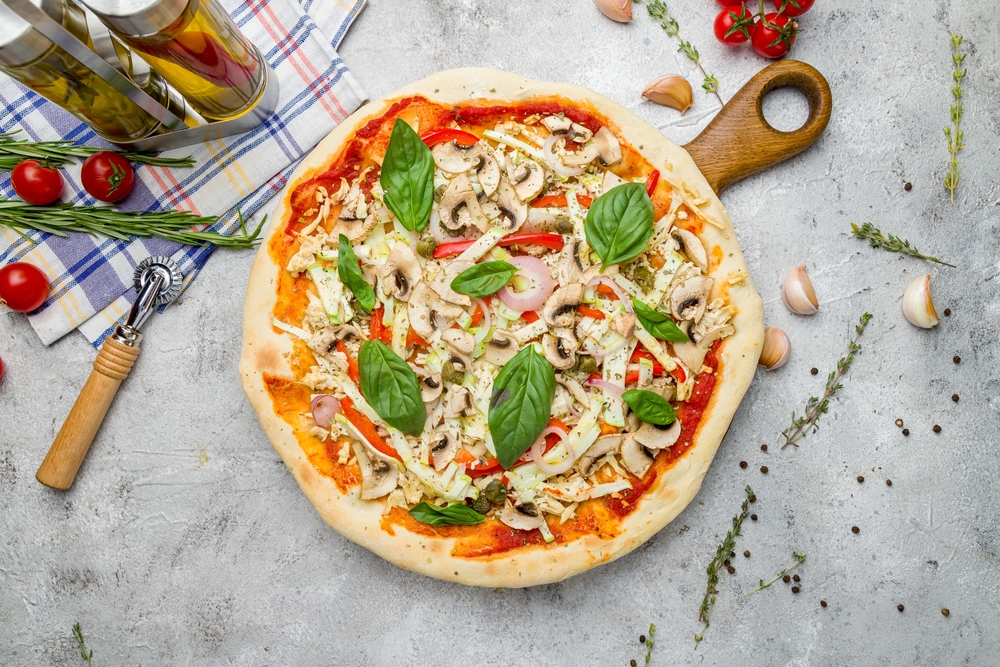
We will offer our advice on how to top a pizza like an expert in this article. The order in which you add your components to a pizza is one of the most crucial factors.
Typically, you want to start by spreading the sauce evenly throughout the pizza, leaving some room around the borders for the crust. The cheese should next be added, being sure to spread it out evenly on the pizza.
Then, whether it be meat, vegetables, or a combination of both, you can add your chosen toppings. By arranging your ingredients in layers, you can make sure that your pizza has a well-rounded flavor profile in every bite.
The quantity of toppings you use while topping a pizza is another important aspect to take into account. While it may be tempting to smother your pizza in toppings, this can actually make the crust soggy and tasteless.
Instead, aim for a moderate number of toppings that will accentuate the crust’s flavor and texture without being overpowering. Keep in mind that when it comes to pizza toppings, less is frequently more.
You’ll be well on your way to making tasty, artfully topped pizzas in no time if you keep these suggestions in mind.
The Pizza Base
When it comes to making a delicious pizza, the base is just as important as the toppings. In this section, we’ll cover everything you need to know about creating the perfect pizza base.
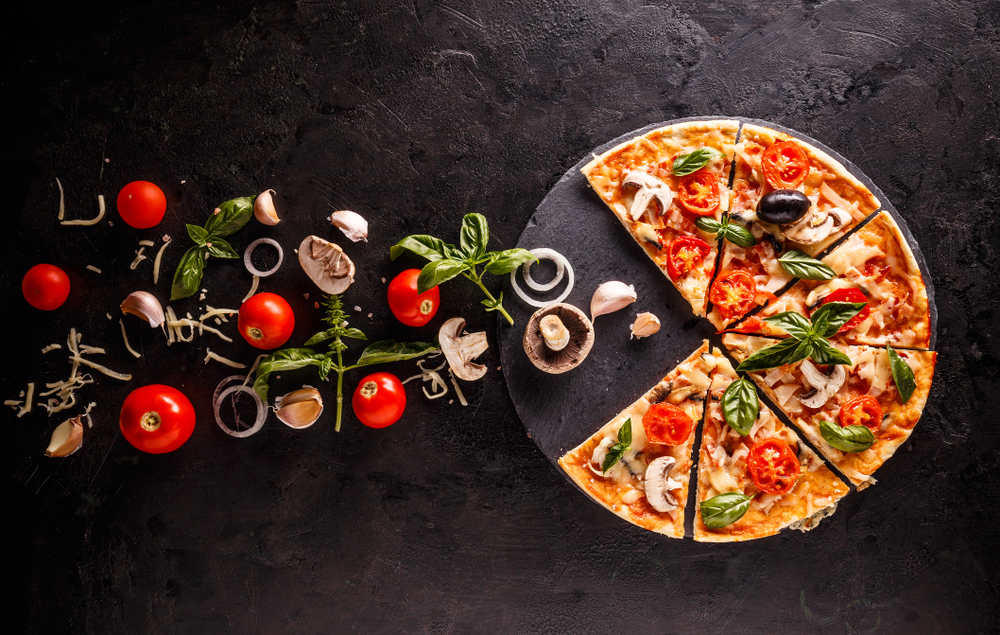
Choosing the Right Dough
The first step in making a great pizza base is choosing the right dough. There are many different types of pizza dough recipes out there, but the key is to find one that works for you.
Some people prefer a thin and crispy crust, while others like a thicker, chewier base.
When choosing a dough recipe, consider the ingredients. A good pizza dough should be made from high-quality flour, yeast, salt, and water. You can also add a little bit of olive oil or sugar to enhance the flavor.
If you’re short on time, you can also buy pre-made pizza dough from the grocery store. Just make sure to read the ingredients list and choose a dough that is made from natural, wholesome ingredients.
Preparing the Dough
Once you’ve chosen your dough, it’s time to prepare it. Here’s a step-by-step guide:
- Let the dough come to room temperature. If you’re using pre-made dough, take it out of the fridge and let it sit for at least 30 minutes before using it.
- Dust your work surface with flour. This will prevent the dough from sticking.
- Roll out the dough to your desired thickness. If you like a thin and crispy crust, roll the dough out very thinly. If you prefer a thicker base, leave it a little bit thicker.
- Transfer the dough to a pizza pan or baking sheet. You can also use a pizza stone if you have one.
- Add your toppings and bake the pizza according to your recipe.
By following these steps, you’ll be able to create a delicious pizza base that is crispy on the outside and chewy on the inside.
Experiment with different dough recipes and thicknesses until you find the perfect combination for you.
The Sauce
When it comes to topping a pizza, the sauce is one of the most important elements. It’s what adds flavor and moisture to the pizza, and it’s what helps the toppings stick to the crust.
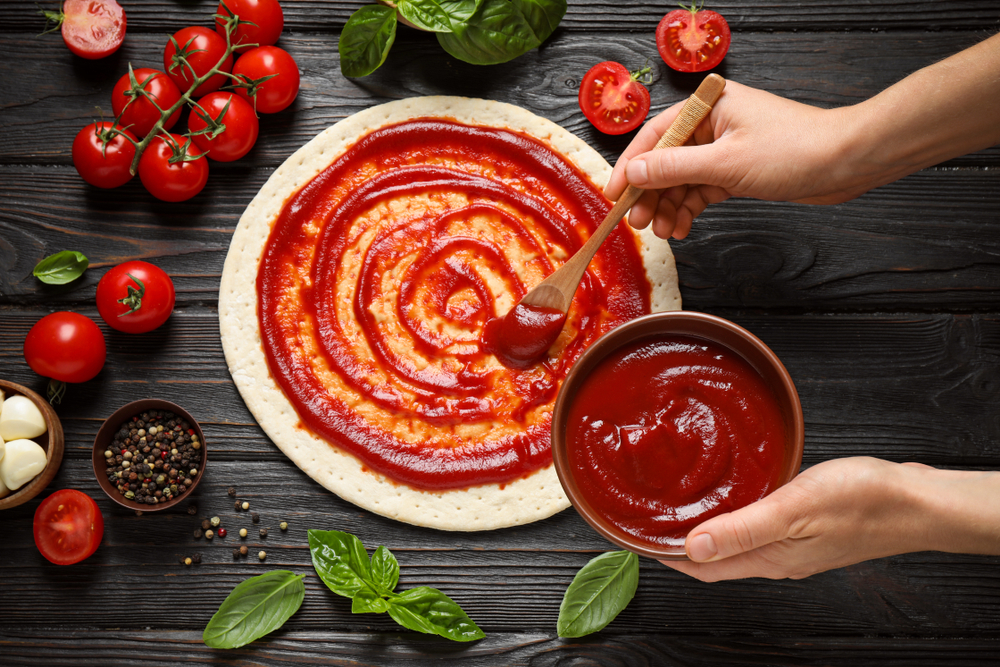
We’ll discuss the different types of sauce you can use on your pizza and how to make your own sauce.
Tomato Sauce vs. Marinara Sauce
Tomato sauce and marinara sauce are two of the most common sauces used on pizza. Tomato sauce is a simple sauce made from tomatoes, garlic, and olive oil. It’s a great choice if you want a basic sauce that won’t overpower your other toppings.
Marinara sauce, on the other hand, is a more complex sauce that usually includes onions, garlic, and herbs like basil and oregano. It’s a great choice if you want a sauce with more flavor.
Making Your Own Sauce
If you want to make your own sauce, it’s easier than you might think. Here’s a simple recipe for tomato sauce that you can make at home:
| Ingredients | Amount |
|---|---|
| Canned tomatoes | 28 oz |
| Garlic | 2 cloves |
| Olive oil | 2 tbsp |
| Salt | 1 tsp |
| Sugar | 1 tsp |
- Crush the garlic and sauté it in olive oil until fragrant.
- Add the canned tomatoes, salt, and sugar to the pan.
- Simmer for 20-30 minutes, stirring occasionally, until the sauce has thickened.
If you want to make marinara sauce, you can add onions, herbs, and other seasonings to the recipe. Experiment with different ingredients until you find a sauce that you love.
The sauce is an essential part of any pizza. Whether you prefer tomato sauce or marinara sauce, or you want to make your own sauce, there are plenty of options to choose from.
Experiment with different sauces and toppings until you find the perfect combination for your taste buds.
The Toppings
When it comes to topping a pizza, there are endless possibilities. We can add meats, vegetables, fruits, cheese, and more to create a delicious and unique pizza. Let’s cover some of the most popular and tasty pizza toppings.
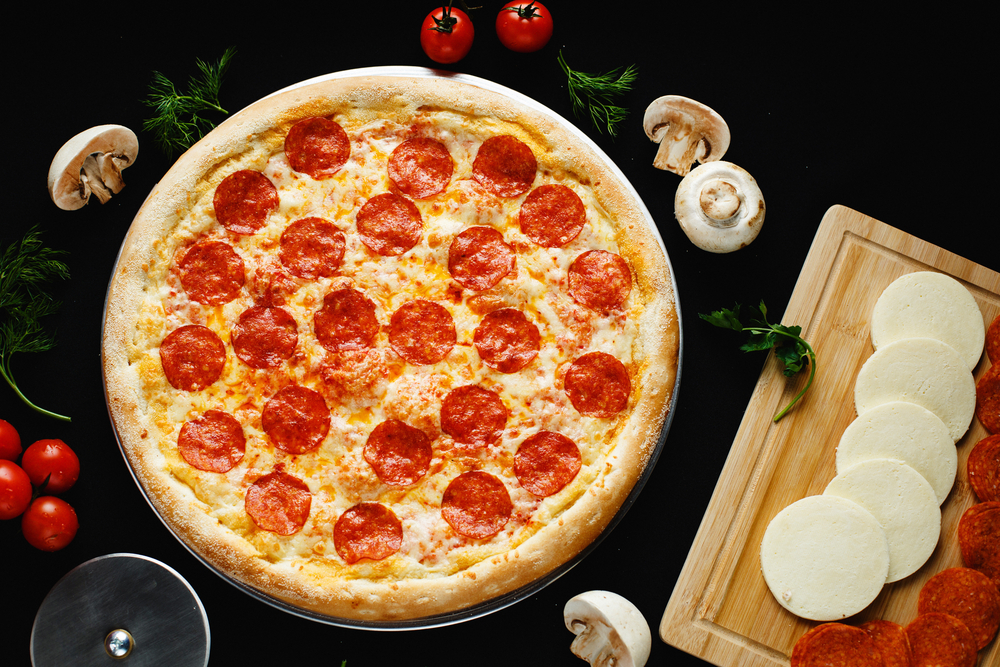
Meats
Meat toppings are a classic choice for pizza lovers. Pepperoni is one of the most popular meat toppings and for a good reason.
It adds a spicy and savory flavor to the pizza. Other meat toppings include chicken, prosciutto, and sausage. These toppings can be cooked beforehand and then added to the pizza before baking.
Vegetables
Vegetables are a healthy and delicious addition to any pizza. Peppers, mushrooms, and onions are some of the most common vegetable toppings.
They add a crunchy texture and a slightly sweet flavor to the pizza. Other vegetable toppings include spinach, arugula, and artichokes. These toppings can be added raw or cooked depending on your preference.
Fruits
Fruit toppings may seem unusual, but they can add a sweet and tangy flavor to the pizza. Pineapple is a popular fruit topping that pairs well with ham or bacon.
Other fruit toppings include figs, apples, and pears. These toppings can be added raw or cooked depending on the fruit.
Cheese
Cheese is a crucial ingredient in any pizza. Mozzarella is the most common cheese used on pizza, but other cheeses can be used to add more flavor and texture.
Parmesan, fontina, and sliced cheese are some of the other cheese options. These cheeses can be shredded or sliced and added to the pizza before baking.
Topping a pizza is all about creativity and personal preference. By adding meats, vegetables, fruits, and cheese, we can create a delicious and unique pizza that satisfies our taste buds.
Properly Topping Your Pizza
When it comes to topping a pizza, there are a few things to keep in mind to ensure that you end up with a delicious and satisfying pie. Here are some tips for properly topping your pizza:
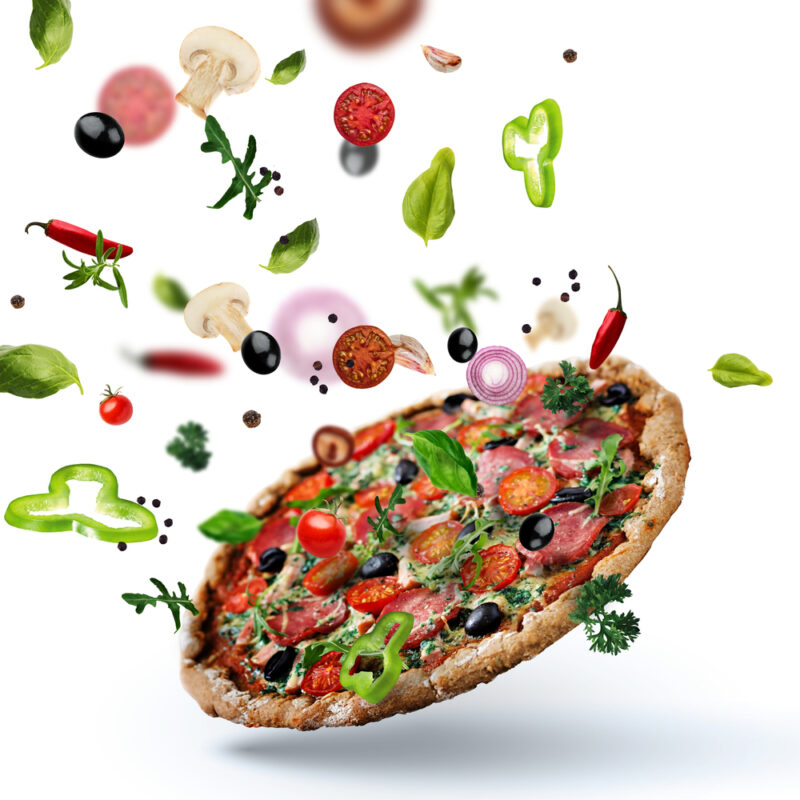
Order Matters
The order in which you add your toppings can make a big difference in the final taste and texture of your pizza.
Generally, it’s best to start with the sauce and then add your cheese, followed by your meats and vegetables.
This allows the cheese to melt and hold the toppings in place, while also preventing the vegetables from becoming overcooked and dried out.
Balance is Key
Another important factor to consider when topping your pizza is balance. You want to make sure that you have a good mix of flavors and textures, without any one ingredient overpowering the others.
For example, if you’re using strong, salty toppings like olives or anchovies, you may want to balance them out with some milder, sweeter toppings like bell peppers or onions.
Cooking the Toppings
Finally, it’s important to keep in mind that some toppings may need to be cooked before they go on your pizza.
For example, if you’re using raw sausage or bacon, you’ll want to cook them first to ensure that they’re fully cooked and crispy when the pizza is done.
Similarly, some vegetables like mushrooms or onions may benefit from a quick sauté in a pan before they go on the pizza.
By following these tips and taking care to properly top your pizza, you can ensure that you end up with a delicious and satisfying pie every time.
Cooking Your Pizza
When it comes to cooking pizza, a few key factors can make all the difference. We’ll cover the right oven heat, using a pizza stone, and using a pizza peel to ensure your pizza comes out perfectly every time.
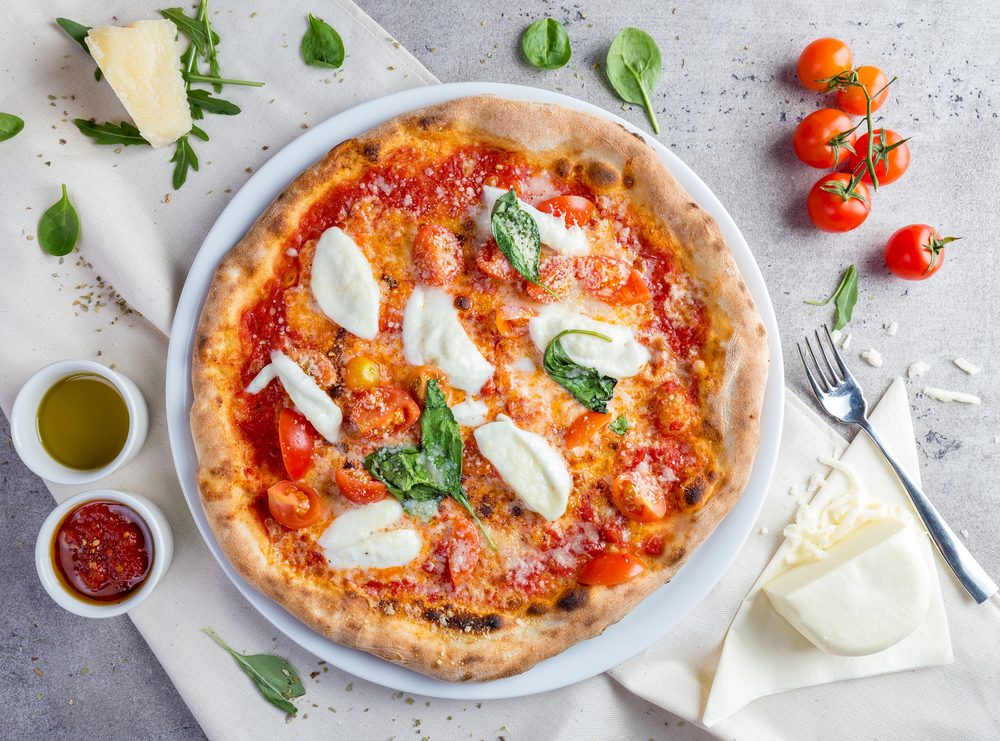
The Right Oven Heat
The first step to cooking a great pizza is getting the oven heat just right. We recommend preheating your oven to 450-500 degrees Fahrenheit.
This will allow the pizza to cook quickly and evenly, without burning the crust or toppings.
If you’re using a home oven, you may need to adjust the temperature slightly to get the best results.
Keep in mind that thicker crusts may require a lower temperature to cook all the way through.
Using a Pizza Stone
A pizza stone is a great investment for anyone who loves making pizza at home. It helps to distribute heat evenly across the pizza, resulting in a crispy crust and perfectly cooked toppings.
To use a pizza stone, simply preheat it in the oven for at least 30 minutes before adding your pizza.
Once the stone is hot, carefully slide your pizza onto it using a pizza peel. The stone will help to absorb moisture from the crust, resulting in a crispier, more flavorful pizza.
Using a Pizza Peel
A pizza peel is a must-have tool for anyone who wants to make pizza at home. It allows you to easily transfer your pizza from the counter to the oven without disturbing the toppings or crust.
To use a pizza peel, simply sprinkle some cornmeal or flour onto the surface to prevent sticking. Then, slide your pizza onto the peel and transfer it to the oven. Make sure to use a quick, smooth motion to avoid disturbing the toppings.
With these tips in mind, you’ll be well on your way to making delicious, perfectly cooked pizza at home.
Whether you’re using a hot oven, pizza stone, or pizza peel, these techniques will help you achieve the perfect pizza every time.
Presentation
When it comes to pizza, presentation is key. Not only do we want our pizza to taste great, but we also want it to look great. In this section, we will discuss how to create a pizza that is not only delicious but also visually appealing. We will cover texture, flavor, and aesthetics.
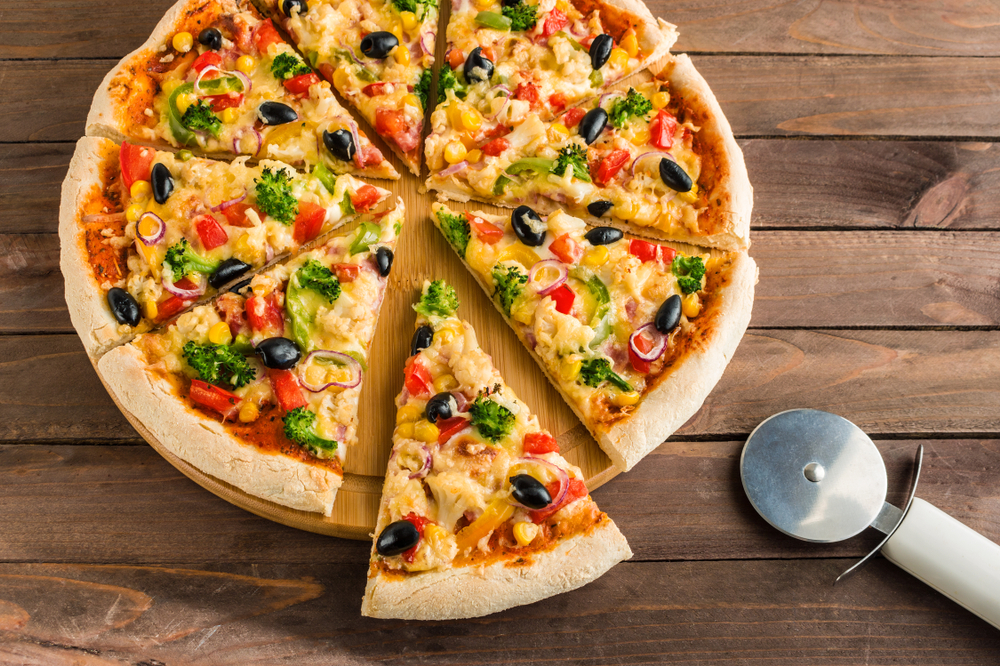
Texture
The texture is an important aspect of pizza. We want our pizza to have a crispy crust, chewy cheese, and a variety of textures from the toppings.
To achieve this, we recommend using a mix of toppings that vary in texture. For example, if you are using mushrooms, consider adding some sliced apples for a contrasting texture.
If you are using sausage, consider adding some diced garlic for a crunchy texture.
Flavor
The flavor is, of course, the most important aspect of pizza. We want our pizza to be packed with flavor. To achieve this, we recommend using a mix of herbs and spices.
Basil is a classic pizza herb that adds a fresh, herbaceous flavor. Garlic is another great pizza flavor that can be used in many different forms, such as minced, sliced, or roasted.
When using garlic, be sure to use it sparingly so as not to overpower the other flavors.
Aesthetics
Finally, we want our pizza to look great. To achieve this, we recommend using a mix of colors and textures. Sicilian-style pizza is a great example of a pizza that is visually appealing.
The thick, fluffy crust is topped with vibrant tomato sauce, creamy mozzarella cheese, and a variety of colorful toppings.
When choosing toppings, consider using a mix of colors, such as red peppers, green onions, and yellow squash. Creating a visually appealing pizza is all about texture, flavor, and aesthetics.
By using a mix of toppings that vary in texture, herbs, and spices that pack a flavorful punch, and a mix of colors and textures, we can create a pizza that is not only delicious but also visually stunning.
Conclusion
Topping a pizza is an art that requires a balance of flavors, textures, and cooking times. We hope that this guide has helped you learn the basics of how to top a pizza properly.
Remember to start with a good quality dough, and use fresh, high-quality ingredients for the toppings.
Here are some key takeaways from this guide:
- Don’t overtop your pizza, as it can lead to a soggy crust and uneven cooking.
- Balance the flavors and textures of your toppings, and think about what goes well together.
- Use a hot oven and stable baking surface for the best results.
- Follow the order of putting toppings on a pizza: sauce, cheese, toppings, and pepperoni.
- Stretch out your dough by hand, rather than using a rolling pin.
By following these tips, you can create a delicious pizza that will impress your friends and family.
Remember to experiment with different toppings and flavor combinations to find your perfect pizza. Happy cooking!







Add comment